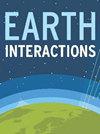Interpretation of Fluoride Groundwater Contamination in Tamnar Area, Raigarh, Chhattisgarh, India
IF 1.1
4区 地球科学
Q3 GEOSCIENCES, MULTIDISCIPLINARY
引用次数: 0
Abstract
A high concentration of fluoride (F−) in drinking water is harmful and is a serious concern worldwide due to its toxicity and accumulation in the human body. There are various sources of fluoride (F−) and divergent pathways to enter into groundwater sources. High F− incidence in groundwater was reported in Raigarh district of Central India in a sedimentary (Gondwana) aquifer system. The present study investigates the hydrogeochemistry of groundwater in the Tamnar area of Raigarh district to understand the plausible cause(s) of high F− concentration, especially the source(s) and underlying geochemical processes. Groundwater samples, representing pre-monsoon (N = 83), monsoon (N = 20), and post-monsoon (N = 81) seasons, and rock samples (N = 4) were collected and analyzed. The study revealed that (i) groundwater with high F− concentration occurs in the Barakar Formation, which has a litho-assemblage of feldspathic sandstones, shales, and coal, (ii) high F− concentration is mainly associated with Na-Ca-HCO3, Na-Ca-Mg-HCO3, and Na-Mg-Ca-HCO3 types of groundwater, (iii) the F− concentration increases as the ratio of Na+ and Ca2+ increases (Na+: Ca2+, concentration in meq/l), (iv) F− has significant positive correlation with Na+ and SiO2, and significant negative correlation with Ca2+, Mg2+, HCO3−, and TH, and (v) high F− concentration in groundwater is found in deeper wells. Micas and clay minerals, occurring in the feldspathic sandstones and intercalated shale/clay/coal beds, possibly form an additional source for releasing F− in groundwater. Feldspar dissolution coupled with anion (OH− or F−) and cation (Ca2+ for Na+) exchange are probably the dominant geochemical processes taking place in the study area. The higher residence time and temperature of groundwater in deeper aquifers also play a role in enhancing the dissolution of fluorine-bearing minerals. Systematic hydrogeochemical investigations are recommended in the surrounding area having a similar geologic setting in view of the potential health risk to a large population.印度恰蒂斯加尔邦莱格尔Tamnar地区地下水氟化物污染的解释
饮用水中高浓度的氟化物(F−)是有害的,由于其毒性和在人体内的蓄积,是全世界关注的一个严重问题。氟化物(F−)的来源多种多样,进入地下水水源的途径也不同。据报道,在印度中部的Raigarh地区的沉积(Gondwana)含水层系统中,地下水中F -的发生率很高。本文通过对莱格尔地区塔纳尔地区地下水水文地球化学的研究,探讨了该地区地下水高氟的可能原因,特别是其来源和潜在的地球化学过程。收集和分析了季风前(N = 83)、季风期(N = 20)和季风后(N = 81) 3个季节的地下水样品和4个季节的岩石样品。研究表明:(1)高F−浓度地下水赋存于Barakar组,具有长石砂岩、页岩和煤的岩石组合;(2)高F−浓度主要与Na- ca - hco3、Na- ca - mg - hco3和Na- mg - ca - hco3类型的地下水有关;(3)F−浓度随Na+和Ca2+比值的增加而增加(Na+:Ca2+(单位:meq/l)、(iv) F−与Na+、SiO2呈显著正相关,与Ca2+、Mg2+、HCO3−、TH呈显著负相关;(v)地下水中F−浓度越深越高。云母和粘土矿物存在于长石砂岩和夹层页岩/粘土/煤层中,可能是地下水中F−释放的另一个来源。长石溶解与阴离子(OH−或F−)和阳离子(Ca2+代替Na+)交换可能是研究区主要的地球化学过程。地下水在较深含水层中停留的时间和温度较高,对含氟矿物的溶解也有促进作用。鉴于对大量人口的潜在健康风险,建议在具有类似地质环境的周边地区进行系统的水文地球化学调查。
本文章由计算机程序翻译,如有差异,请以英文原文为准。
求助全文
约1分钟内获得全文
求助全文
来源期刊

Earth Interactions
地学-地球科学综合
CiteScore
2.70
自引率
5.00%
发文量
16
审稿时长
>12 weeks
期刊介绍:
Publishes research on the interactions among the atmosphere, hydrosphere, biosphere, cryosphere, and lithosphere, including, but not limited to, research on human impacts, such as land cover change, irrigation, dams/reservoirs, urbanization, pollution, and landslides. Earth Interactions is a joint publication of the American Meteorological Society, American Geophysical Union, and American Association of Geographers.
 求助内容:
求助内容: 应助结果提醒方式:
应助结果提醒方式:


